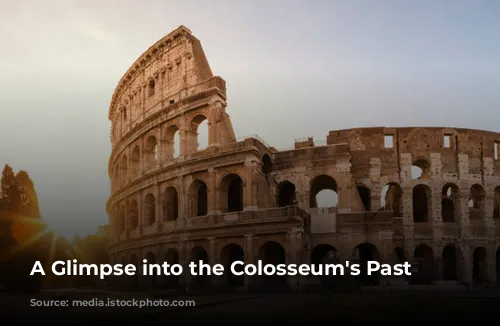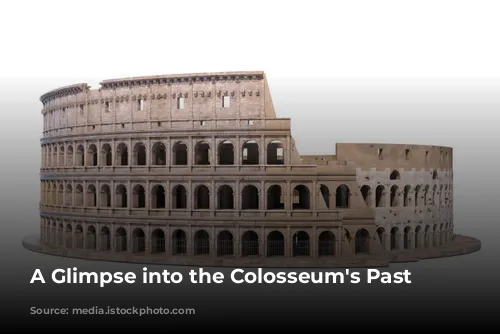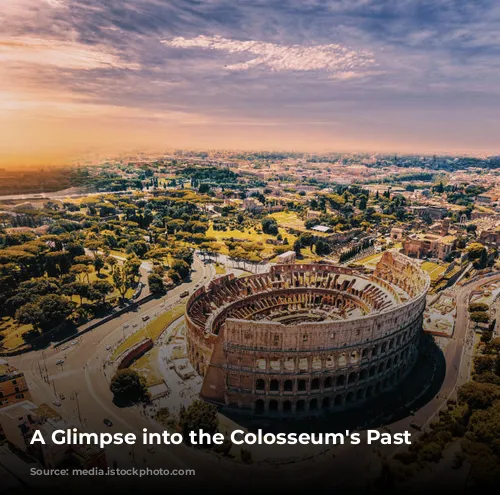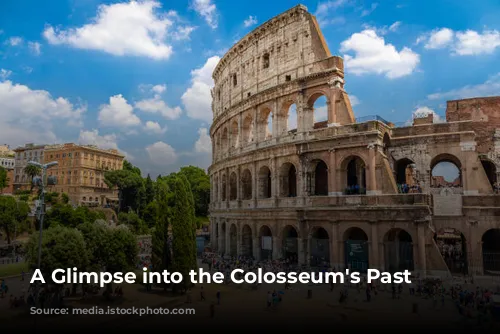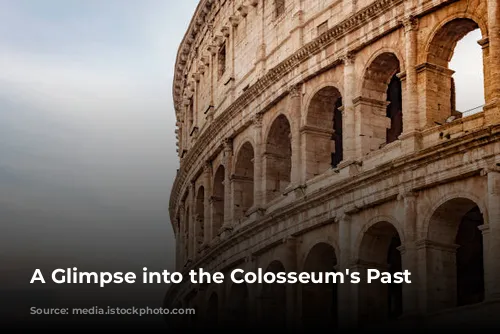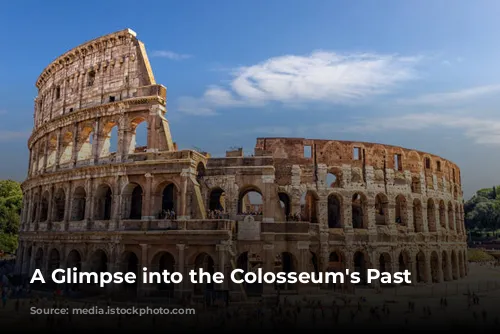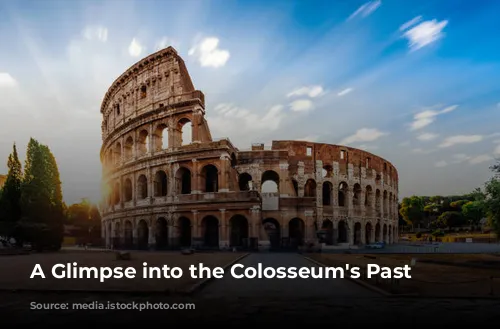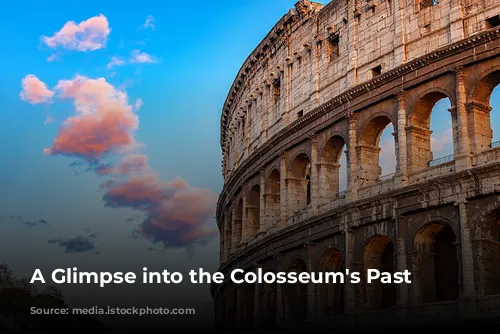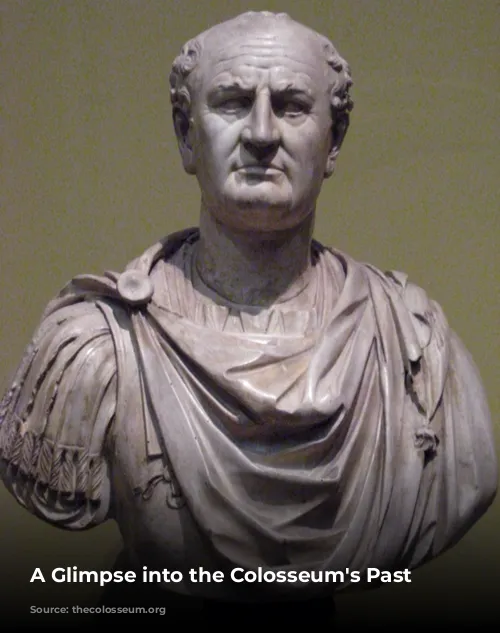The Colosseum, a towering symbol of ancient Rome, boasts a history spanning nearly two millennia. This remarkable amphitheater witnessed gladiatorial battles, thrilling hunts, and even gruesome executions. Join us on a journey through time to uncover fascinating facts about this iconic landmark.

The Colosseum’s Construction: From Slavery to Spectacle
When was the Colosseum built? The Colosseum’s construction began in 72 AD and was completed in 80 AD under the reign of Emperors Vespasian, Titus, and Domitian. The colossal structure, originally known as the Flavian Amphitheater, rose from the ashes of Nero’s opulent palace.
How many people participated in its construction? Following the first Jewish-Roman war, an estimated 60,000 to 100,000 Jewish slaves were transported to Rome and forced to labor on the Colosseum. Their sweat and toil shaped the arena that would later entertain thousands.
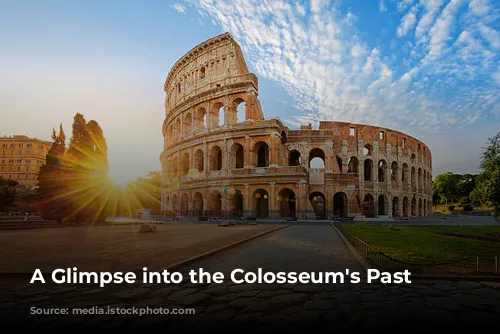
The Colosseum’s Design and Dimensions: A Monument to Roman Power
What does the Colosseum’s name mean? The name “Colosseum” likely originates from the colossal bronze statue of Emperor Nero that once stood beside the arena. This imposing statue was modeled after the Colossus of Rhodes, reflecting the Romans’ desire for monumental grandeur.
How big is the Colosseum? This oval-shaped amphitheater is 189 meters long, 156 meters wide, and 48.5 meters tall. It covers a massive 6 acres of land, showcasing the Romans’ engineering prowess.
How many arches do the Colosseum have? The Colosseum’s outer walls are adorned with three tiers of columns: Doric, Ionic, and Corinthian. Each level boasts 80 arches, 76 of which are numbered with Roman numerals, guiding spectators to their seats.
What material was the Colosseum built from? The Colosseum was constructed using an estimated 100,000 cubic meters of travertine stone quarried in Tivoli. This durable stone, held together by thousands of iron clamps, has withstood the test of time.
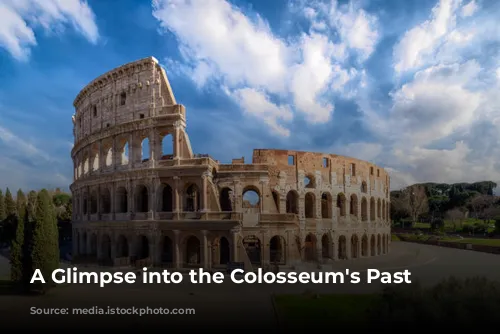
The Colosseum’s Inner Workings: From Underground to Arena
What is underneath the Colosseum? The Colosseum’s “Hypogeum,” meaning “underground,” was an intricate network of tunnels and chambers. It housed gladiators, animals, and prisoners awaiting their fate.
How many spectators could the Colosseum seat? This monumental structure could accommodate a staggering 50,000 to 80,000 spectators, creating a vibrant and chaotic spectacle.
How many people died in the Colosseum? The exact number of lives lost within the Colosseum’s walls remains unknown. However, estimates suggest that as many as 400,000 gladiators, slaves, prisoners, and other entertainers perished in the arena during its 350 years of operation.
What animals were used in the Colosseum? The Colosseum witnessed a menagerie of animals, from majestic lions and tigers to ferocious bears and even elephants. These creatures were used in staged hunts, executions, and even as “executioners” themselves.
How many animals were killed in the Colosseum? Although precise figures are unavailable, accounts of hunts and spectacles suggest that millions of animals met their demise within the arena. Some speculate that the Colosseum’s activities may have led to the extinction of certain animal species in the region.
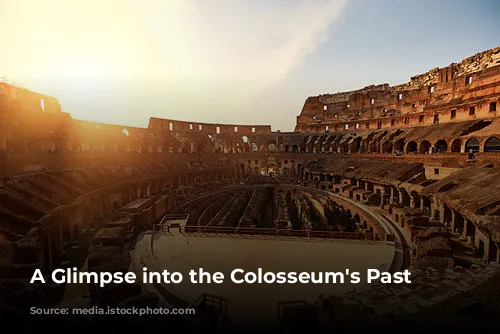
The Colosseum’s Spectacles: From Gladiator Battles to Naumachia
What types of spectacles were put on in the Colosseum? The most famous spectacles were gladiator battles. The Colosseum also hosted hunts, executions, and even “Naumachia”—staged naval battles for which the arena was flooded.
Were gladiator fights as bloody as is believed? Contrary to popular belief, gladiator fights were not a simple free-for-all. Fighters were categorized based on their skills and fighting styles, and matches were overseen by referees and doctors. While death was certainly a possibility, not all fights ended in bloodshed. However, the arena undoubtedly witnessed a vast number of gladiatorial deaths.
Were Christians martyred in the Colosseum? While thousands perished in the arena, there is no conclusive historical evidence to confirm the martyrdom of Christians specifically in the Colosseum.
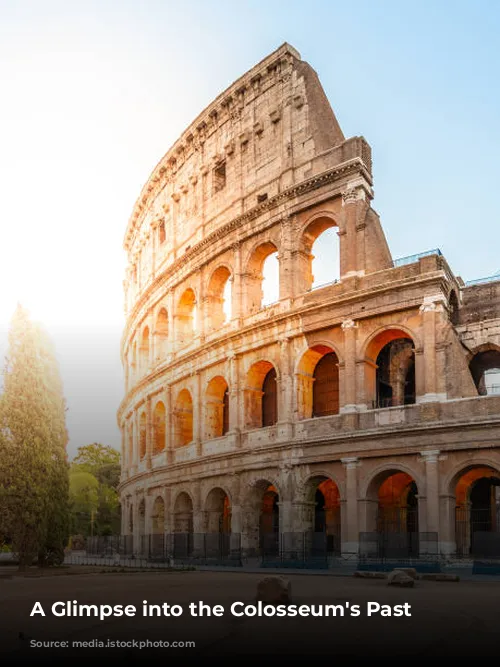
The Colosseum’s Legacy: From Arena to Tourist Attraction
When was the Colosseum last used to host fights? The last recorded gladiator battles took place in 435 AD. Hunts continued for another century until the Colosseum gradually fell into disuse.
Why did gladiator fights in the Colosseum stop? Contrary to popular belief, Christianity did not directly lead to the end of gladiatorial combats. The Colosseum’s decay, the Roman Empire’s decline, and the increasing cost of maintaining the arena, paying gladiators, and providing animals proved to be insurmountable challenges.
What catastrophes has the Colosseum suffered? Throughout history, the Colosseum has endured several fires and earthquakes. These disasters caused significant damage, but the arena was repaired and rebuilt multiple times, demonstrating its resilience.
What has the Colosseum been used for other than as an arena? After its decline as an arena, the Colosseum served as a cemetery, a place of worship, housing for the poor, workshops, a fortified castle, and ultimately, as a tourist attraction.
How many people visit the Colosseum every year? Today, the Colosseum attracts over 7 million visitors annually, making it one of the world’s most popular landmarks.
The Colosseum stands as a testament to the grandeur and complexity of ancient Rome, a place where history and entertainment intertwined. From its construction by slaves to its transformation into a global icon, the Colosseum’s journey through time is a remarkable story of resilience, spectacle, and enduring fascination.
